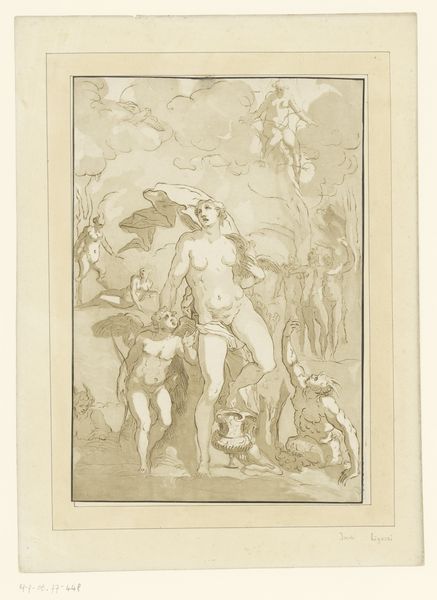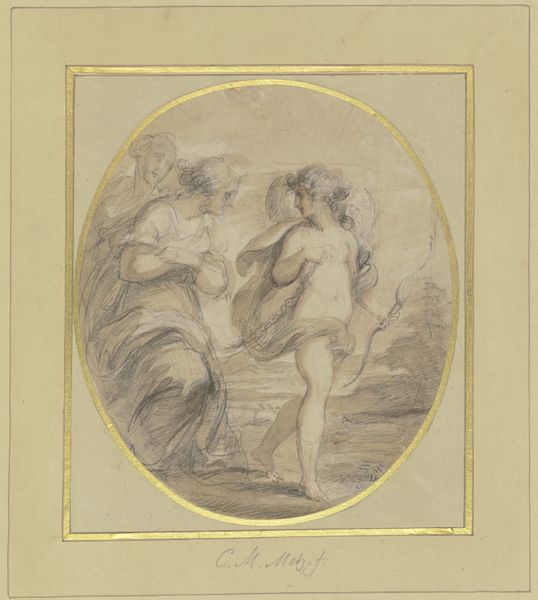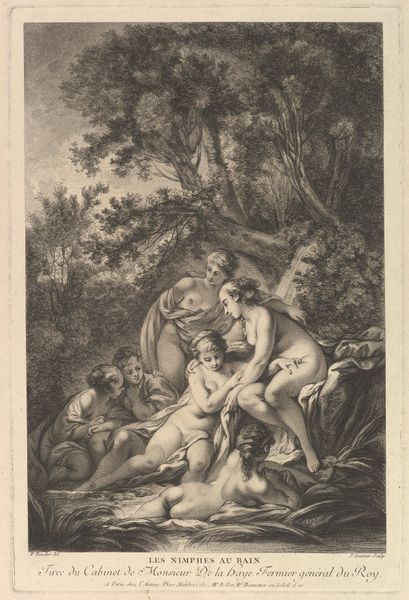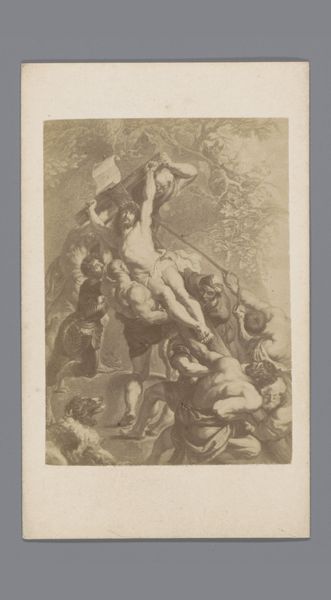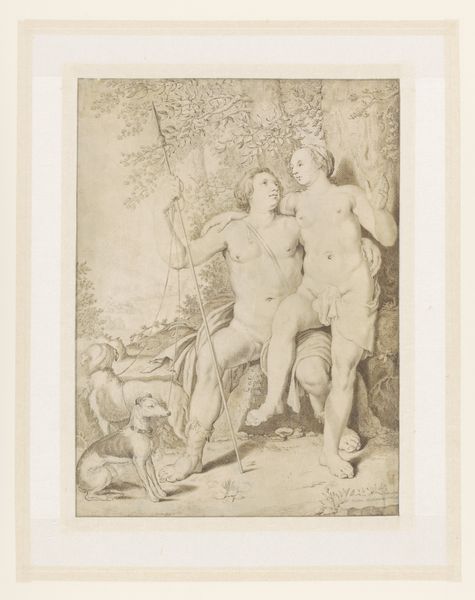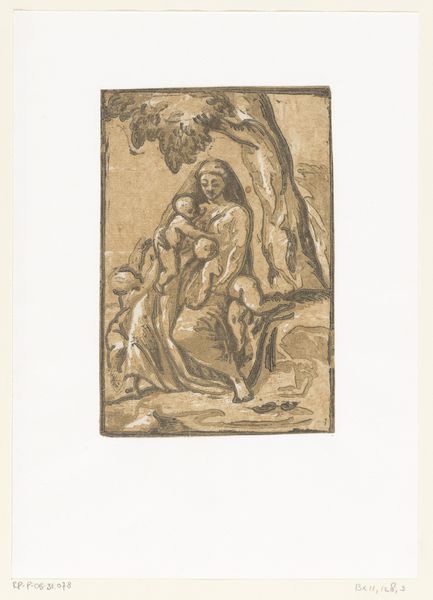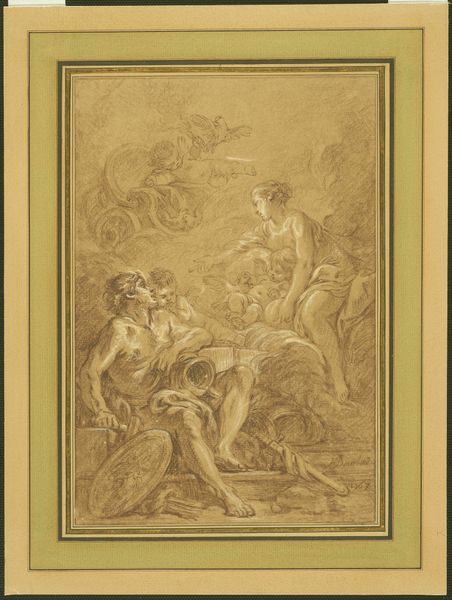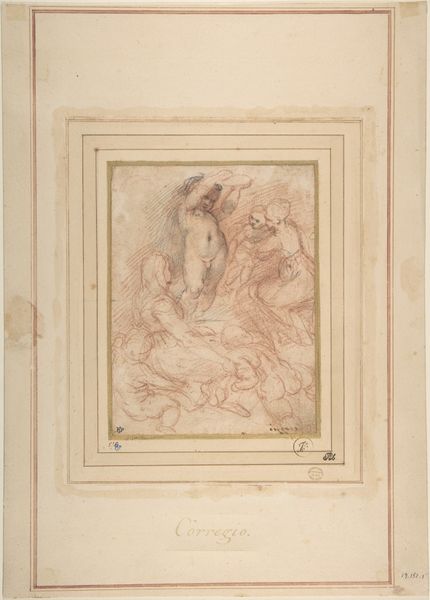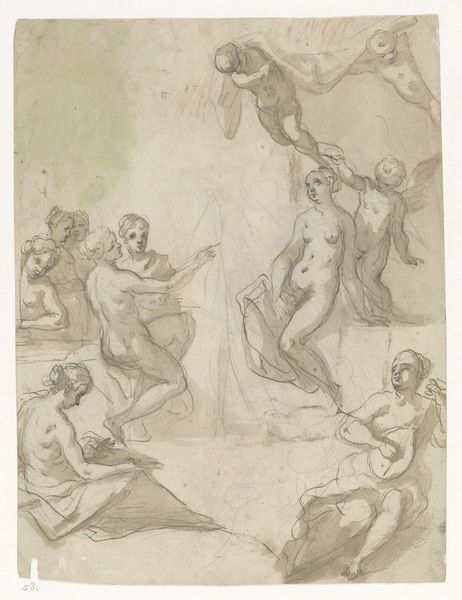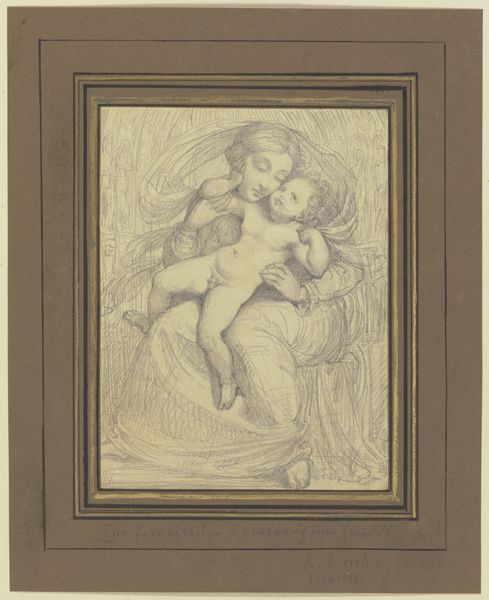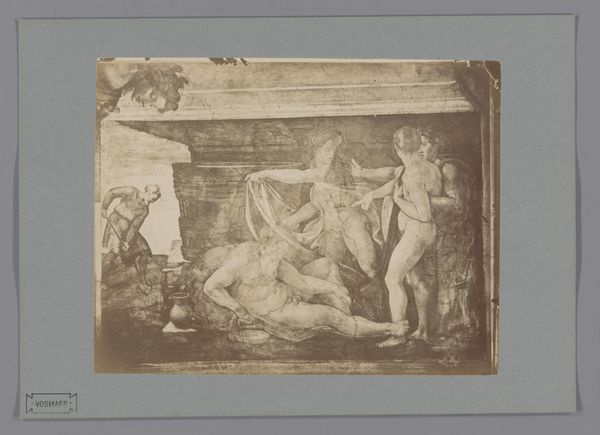
Fotoreproductie van het schilderij De bewening van Christus, van Anthony van Dyck 1858 - 1866
0:00
0:00
anonymous
Rijksmuseum
Dimensions: height 105 mm, width 63 mm
Copyright: Rijks Museum: Open Domain
Editor: So, this is a photorealistic print dating back to between 1858 and 1866, of Anthony van Dyck's "The Lamentation of Christ." It's rendered in etching on paper. I find its composition deeply moving, yet the washed-out monochrome creates a sense of distance, like a memory. What do you see in this piece? Curator: This image, layered in historical reproduction, offers multiple entry points. The initial painting, a canonical work of the Baroque, displays a carefully constructed iconography. But in its transition into an etching, it’s gained something new. Notice the subtle rendering of light and shadow. This technique is vital – the grief isn’t just depicted through faces, but etched into the very fabric of the scene, no? It recalls earlier iconic lamentation scenes, but what feelings arise when you think of it being reproduced at the time? Editor: I hadn't thought about that. Maybe a longing for a connection to that historical emotional display that might have felt lacking then? Curator: Precisely! The act of reproduction transforms the initial religious expression into a signifier of cultural memory. Van Dyck originally tapped into existing wells of religious grief, universal pain materialized by specific people. But here, a reproduction of that moment takes center stage – a layering of emotions. Look closer—does the act of reproducing affect how you feel toward it? Editor: Definitely. There’s a vulnerability, like the emotion is now doubly exposed by both Christ’s death and the reproduction of it. It seems that making a copy has, itself, made it vulnerable. Curator: Exactly! This image becomes a palimpsest— layers of cultural encoding and re-encoding creating something new, evoking feelings, time, and historical connections. We look back as people in this piece looked back, and will look back to our current moment at a future date, too. It’s amazing to see history in an image from history. Editor: I’ve definitely gained a new appreciation for considering how an artwork like this accrues meaning and emotion over time! Thanks so much!
Comments
No comments
Be the first to comment and join the conversation on the ultimate creative platform.
